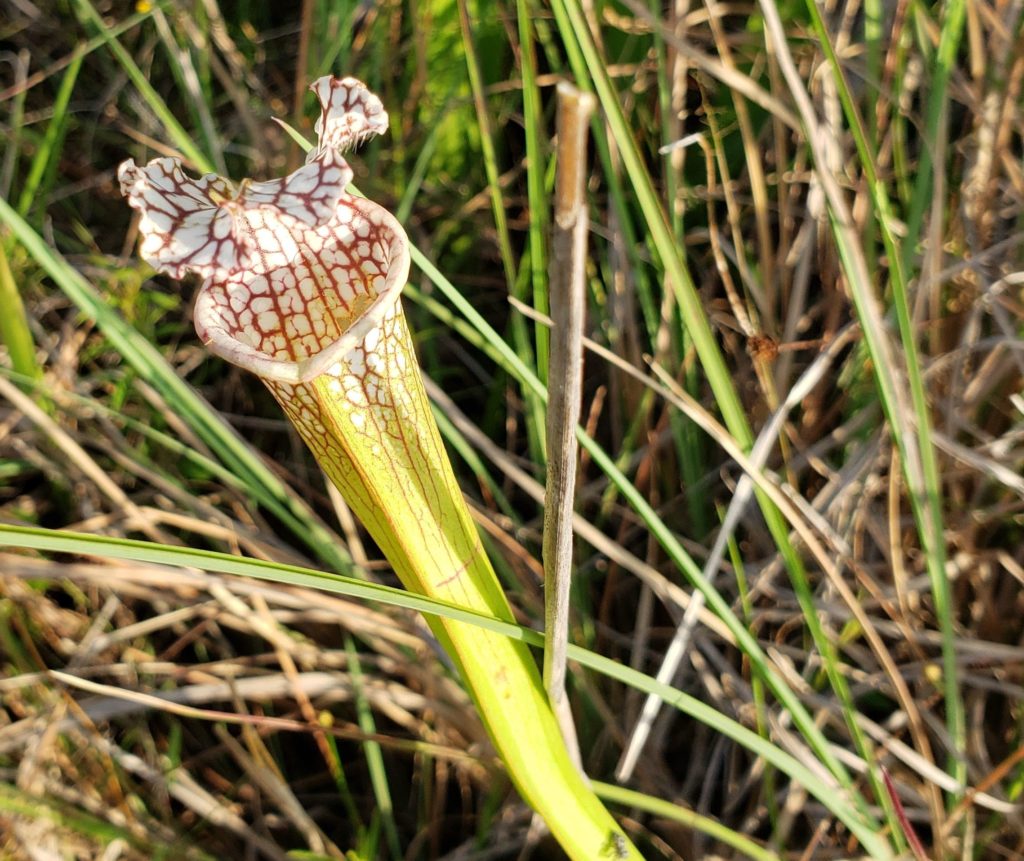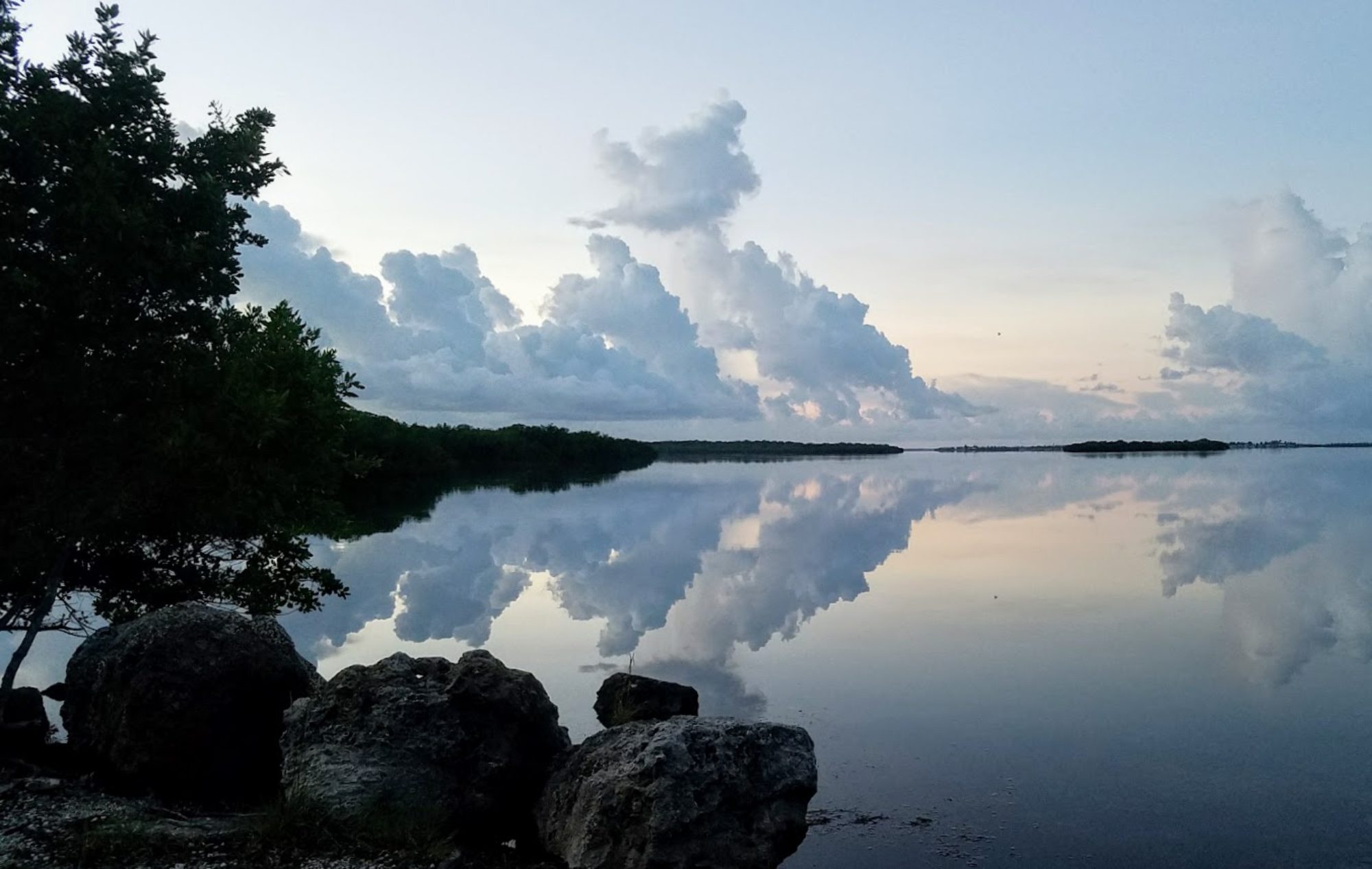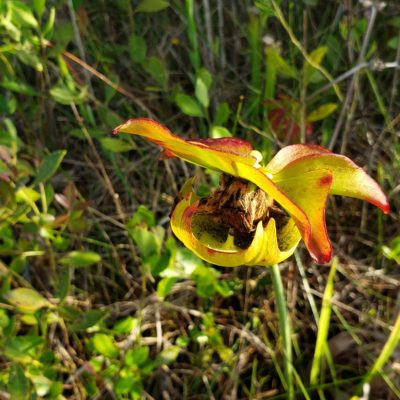If you enjoyed the movie Little Shop of Horrors, you’ll no doubt remember Audrey, with her toothy smile and endless appetite for human flesh. I suspect, after a trip to Tarkiln Bayou State Park, that Audrey was fashioned after the flower of the White Pitcherplant, Sarracenia leucophylla.
Pitcherplants have evolved to produce a tubular leaf that has a lid or hood at the top. Inside the tube are hairs that point downward, and sweet nectar. Insects that are attracted by this nectar soon find it impossible to move past the downward pointing hairs to escape, and they are digested by enzymes that collect in the bottom of the pitcher. In this way, the plant can obtain nitrogen, which is very limited in the bogs in which pitchers thrive. Mosquito larvae can somehow survive the digestive enzymes and will develop in pitcherplants, and spiders may hide under the lids, so despite their appetites, pitcherplants can provide habitat for some small creatures.
Interestingly, the flowers of the pitcherplant are taller than the pitchers. This enables pollinating insects to spread pollen from one plant to the next and even gather nectar without being gobbled up.
Open canopy savanna is the pitcher’s preferred habitat, where the earth is wet or damp all year round. Florida has at least six species of Sarracenia…five of which are listed as threatened or endangered. Not surprisingly, the drainage of wet areas and fire suppression have reduced the habitat for pitchers and other carnivorous plants.

In reading for this article, I learned that the White Pitcherplant produces pitchers in the late spring (this is the crop we saw) and in the late summer. Summer pitchers are larger than the spring pitchers . . . guess who’s planning her next trip to Tarkiln Bayou?

